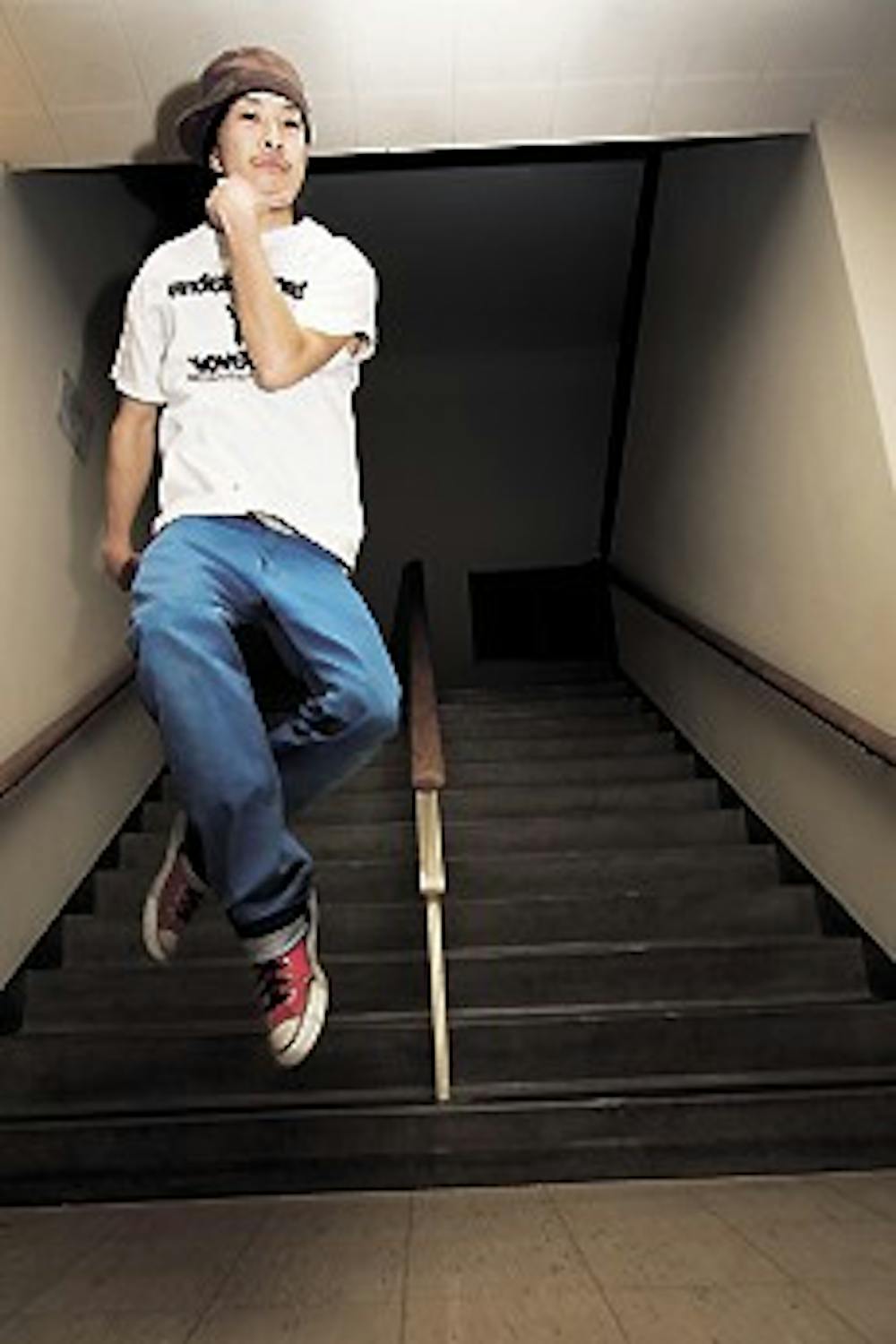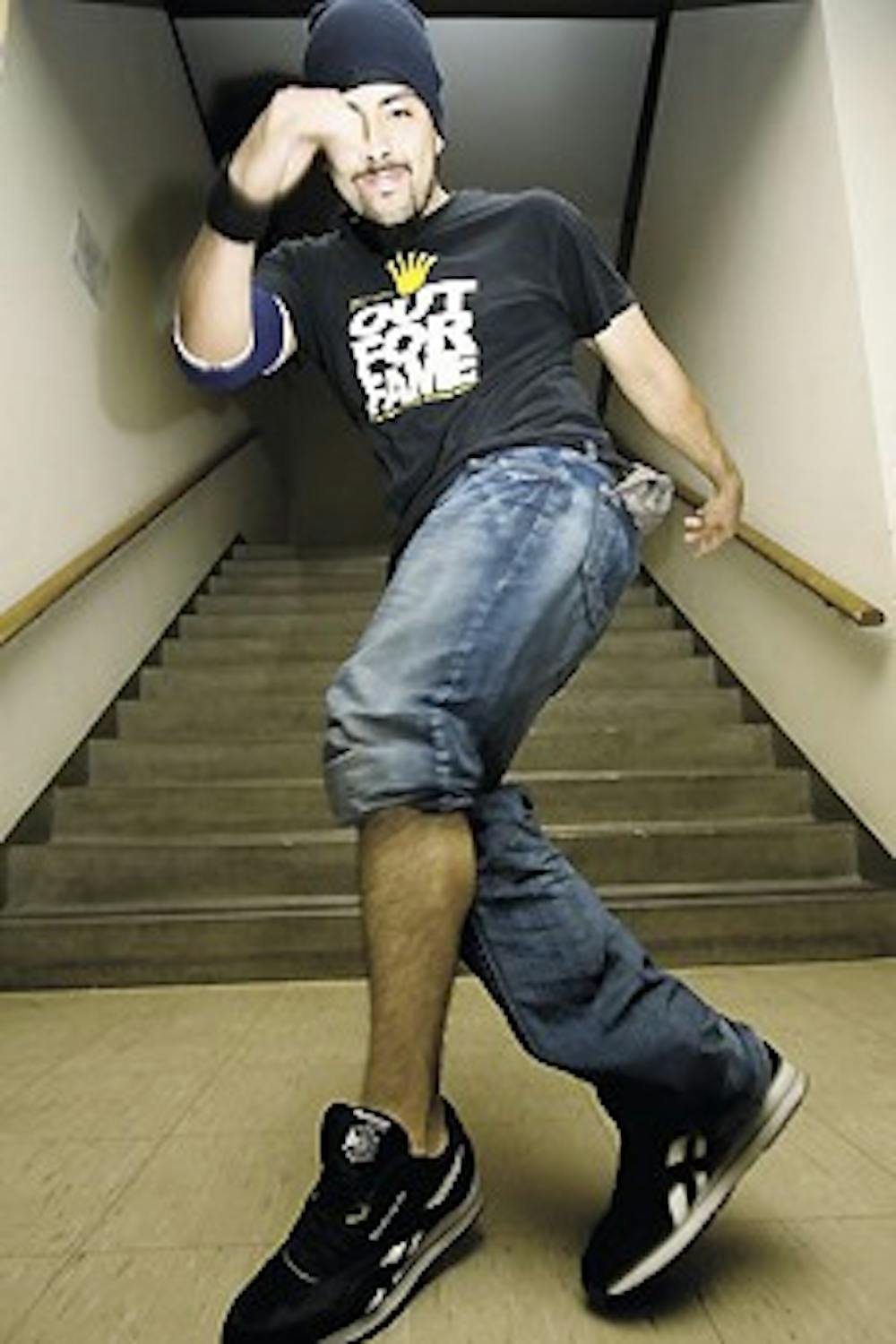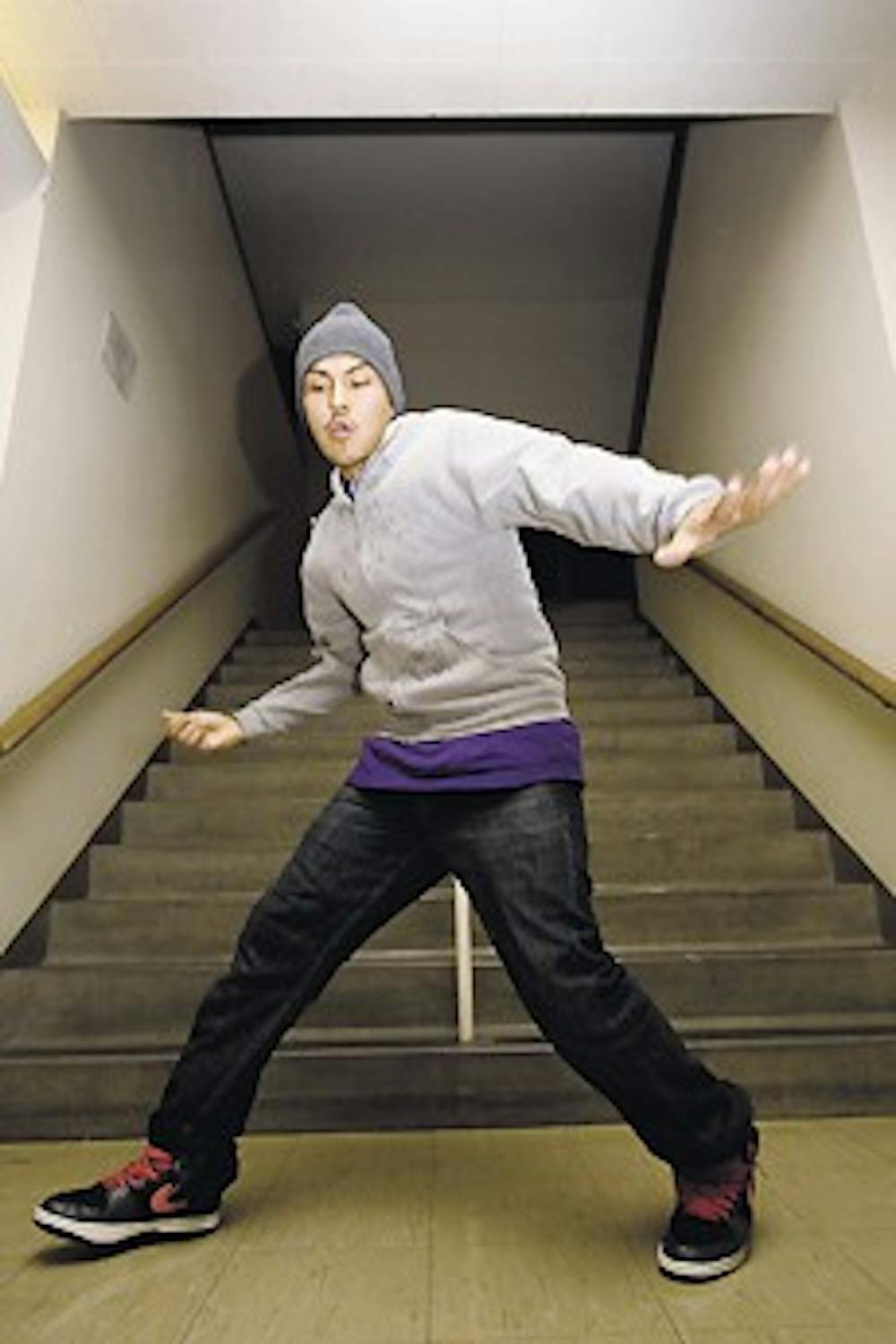"First thing, it's not called break dancing," secondary education senior Chris Coupelin says. "That's what some journalist or newscaster or something decided to call it. It's b-boying or breakin'. "
Chris Coupelin is a b-boy. He and his crew of five battle other crews weekly in hopes of proving themselves to be the best.
Battles are b-boy competitions. The crew stands behind the b-boy, cheering him on and jeering at his opponent. Each champions his best moves for judges — usually knowledgeable b-boys from well-known crews. It's not the kind of thing you see on TV. It doesn't climax with one head spin and no one wins after one back flip.
It's hard to keep track of their feet as they cross over, but they never trip up. They balance with their feet kicked up and, no matter how fast it seems, there's an athletic sense of control every time their bodies fall back down. "They think it's just about music and spinning on the floor," Coupelin says. "It's not that easy. It's pretty much just like a sport."
Coupelin says he started breakin' in 1999, while serving in the military. He made a few friends and they took a trip to Myrtle Beach. He saw his first battle there. "I saw what they were doing," Coupelin says. "That's when I decided, I'm going to start breakin'. Then I did the intellectual thing. I looked it up on the Internet." Coupelin says he held the instructions in one hand as he tried out the moves.
He moved to Montana and met a few b-boys, giving him a chance to practice with others. Coupelin then moved around the country, "battling everywhere from Montana to Florida," he says. It was in Atlanta, however, that he finally started entering real competitions.
Coupelin came to Arizona and says his style attracted fellow b-boys like Phoenix resident Lorin Nuvayestewa. They then formed The Outsiderz Crew.
"I was self-taught," Nuvayestewa says. "I never had anyone to look up to. I just watched videos. I kept rewinding it and rewinding it." Nuvayestewa says he started breakin' when he was 13 years old.
Coupelin says this is more typical — b-boys start young.
Local b-girl Bonita, now a dance instructor, was recruited to the nationally recognized Rock Steady Crew when she was only 7 years old.
There are entire groups dedicated to young breakers. Arizona's Curfew Breakers regularly performing at competitions and at Mill Avenue on weekends. The group boasts that all its members are under the age of twelve.
Coupelin says it takes a bit more than a sheet of instructions and a few "B-Street" videos to start. It's worth trying out, but Coupelin says it's not for everyone.
"It's like saying, 'Can anybody be Chinese?' " he says. "No, not everyone can be Chinese. So, no, not everyone can break dance." Clockwise from top left are b-boys Chris Coupelin, Alex Aguirre, Keisuke Yatsuda and Lorin Nuvayestewa.
Coupelin says this has to do more with determination than anything else, and Nuvayestewa agrees.
"It's a hard question: can anyone break," Nuvayestewa says. "It's not about the person. It's about heart."
Coupelin started to learn with a friend. That friend fell on his face a few times — so did Coupelin — but after a week his friend stopped, and didn't try again. Coupelin says perseverance is what separates b-boys from the rest.
Valerie Chavez, a nursing junior at Mesa Community College, is a late bloomer in the b-girl world. She is 21 and has only been breakin' for about a year. She says perfectly executed moves come after some pain.
"I've fallen a couple of times just because it's normal, especially when you're new," Chavez says. "Several times on my butt, several times on my face…bruises everywhere."
She didn't let it shake her, she says. Chavez started with the six-step, a move on the floor where a dancer crosses his or her feet quickly in time with the music.
Chavez says more complicated footwork is the mark of more advanced dances and earns high scores in a battle.
Battles can take place informally at clubs or at competitions, such as the Kings of AZ League Series, a frequently occurring competition that often takes place at the ASU Tempe campus. The b-boys there are intimidating — at the most chaotic moment they are completely in control of every appendage.
Competing is, however, the best way to improve, Coupelin says. Likewise, Nuvayestewa says the will of the person will carry them through.
"It's not that much people teaching other cats," Nuvayestewa says. "It's all about you."
Reach the reporter at: rebecca.washington@asu.edu.








